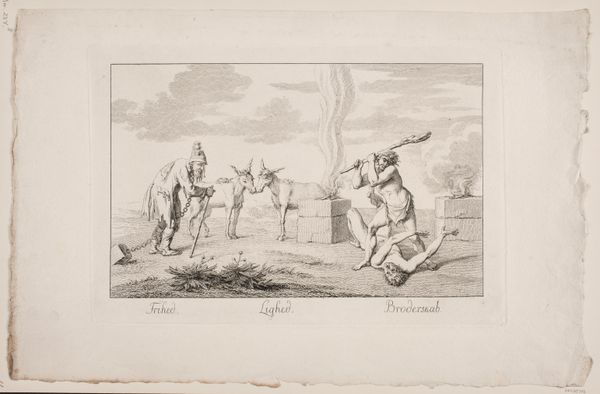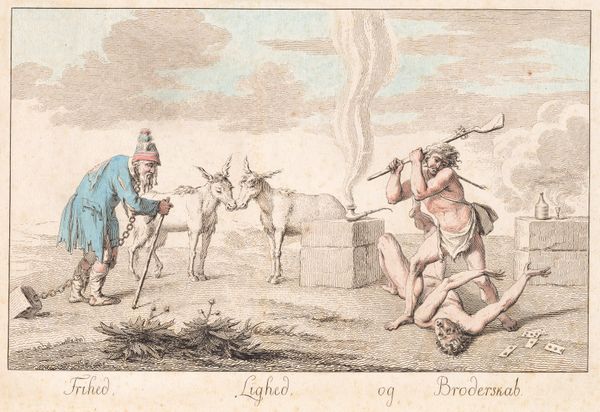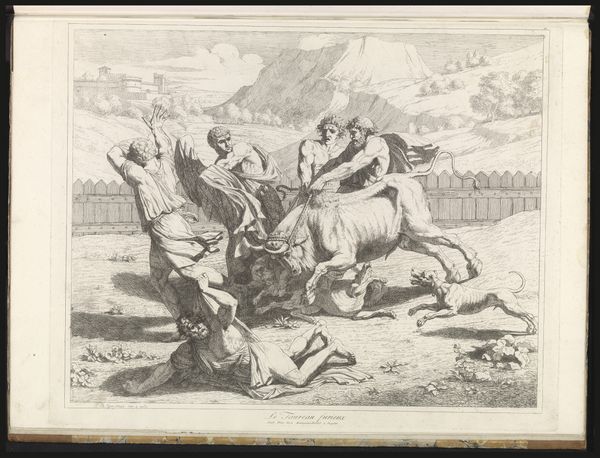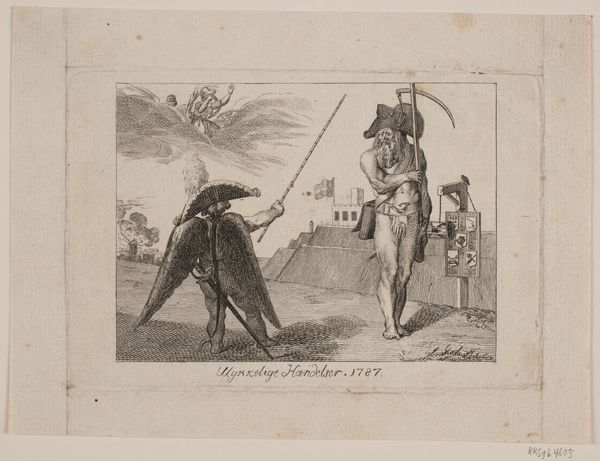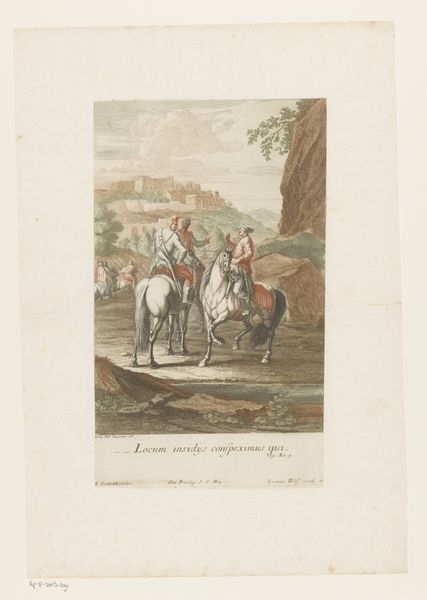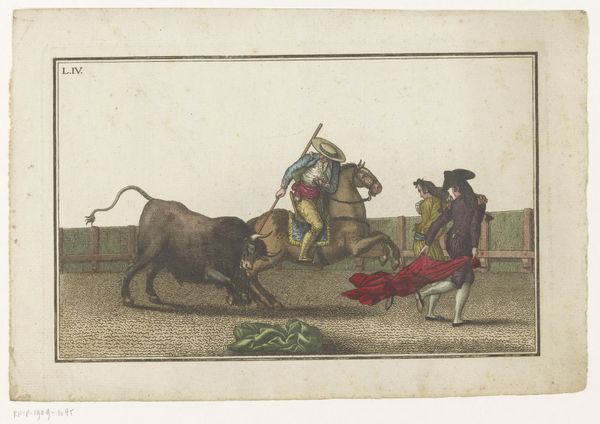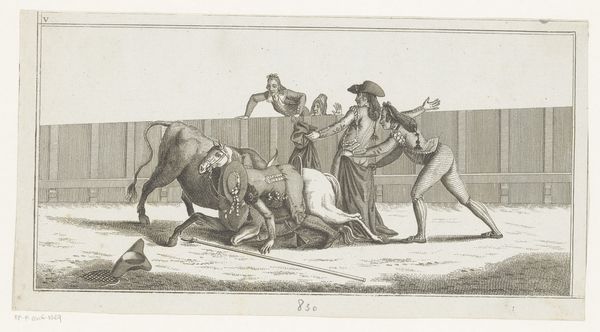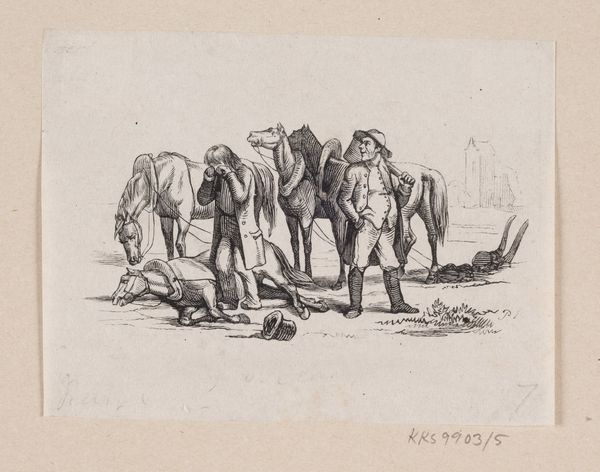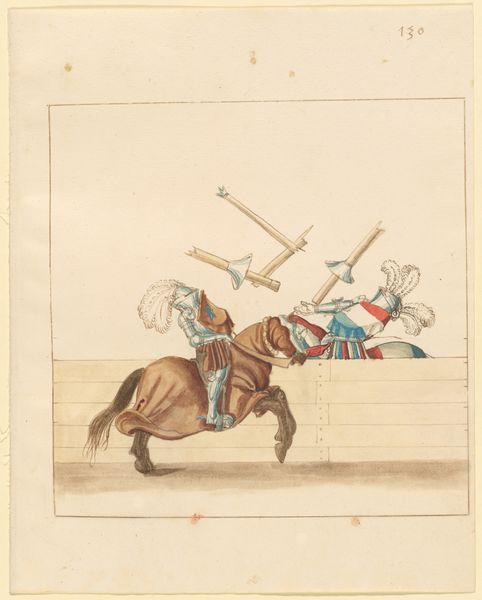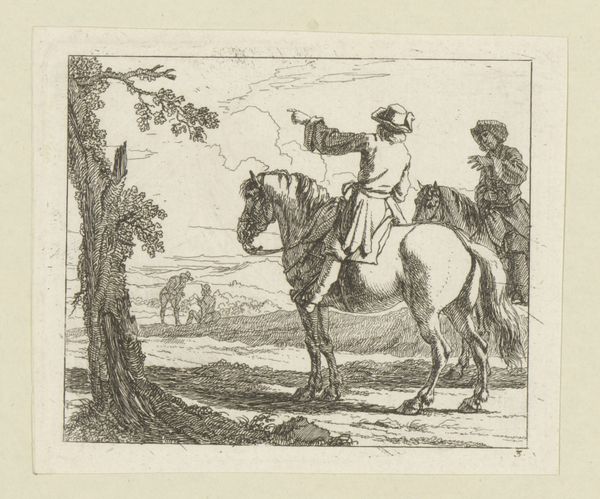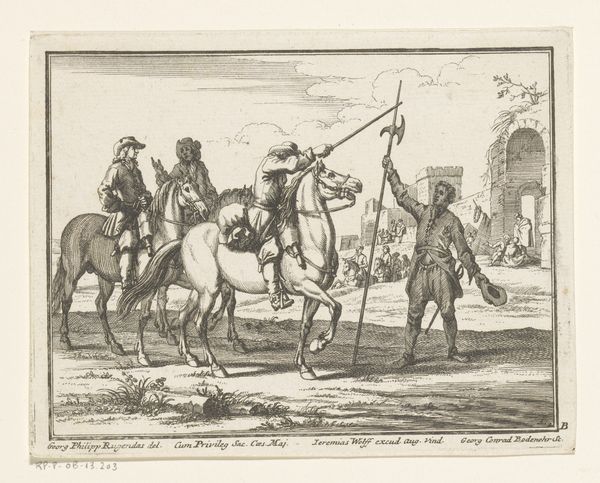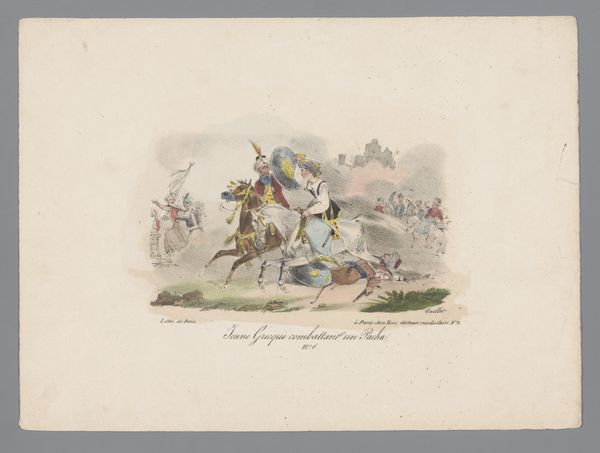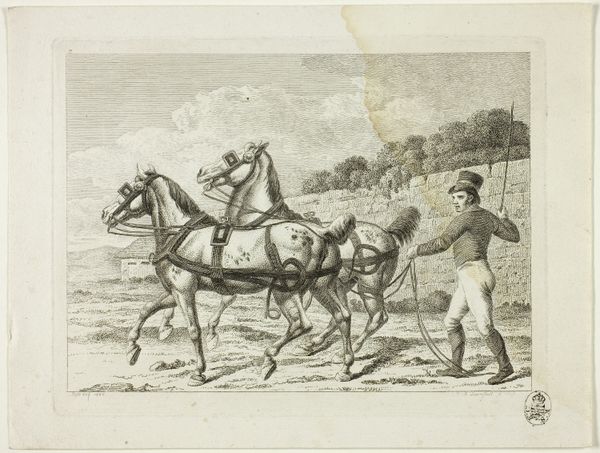
drawing, print, etching, ink, engraving
#
drawing
#
allegory
#
narrative-art
# print
#
etching
#
ink
#
romanticism
#
history-painting
#
engraving
#
watercolor
Dimensions: 279 mm (height) x 417 mm (width) (bladmaal), 228 mm (height) x 338 mm (width) (plademaal), 191 mm (height) x 304 mm (width) (billedmaal)
Curator: This print, etched and engraved by J.F. Clemens in 1798, is entitled "Frihed, lighed og broderskab." It's currently held in the collection of the SMK, Statens Museum for Kunst. What's your initial take? Editor: My eye is immediately drawn to the disturbing imagery in the print's composition. There is an unsettling contrast between the figures embodying "Frihed" and "Lighed" versus "Broderskab," hinting at violence and social upheaval. Curator: Indeed. The French revolutionary ideals, emblazoned with 'Liberty, Equality, Fraternity', clearly serve as a point of contention. The artist's intent appears satirical when examined from a socio-political vantage point. What stands out for you iconographically? Editor: Well, to begin, consider the donkey with a horn; it's placed in the center to represent equality. And then juxtapose it with the third scene showing ‘Fraternity’, an execution! One can feel an assault of negative meanings projected from what the words themselves were meant to invoke. Curator: Right, and 'Frihed' —Liberty— is depicted by a shackled man, an enslaved man in a Phrygian cap that mocks freedom instead of embodying it. The very symbols are inverted, subverted. The print critiques the very ideals it names. Editor: The composition really strengthens that narrative. Each virtue gets its tableau. A viewer might see, even today, the ideals of a society that seem very neat in thought until human will attempts to put them in practice. Curator: It's a powerful indictment of revolutionary rhetoric, made all the more poignant by its engagement with these instantly recognizable symbols of liberty. Clemens highlights the discrepancies between abstract concepts and brutal realities of its time, one where fraternity appears to mandate subjugation. Editor: It seems especially tragic and meaningful that equality is depicted by not one, but two, nearly identical, mirroring images of beasts of burden. It creates the perfect irony, that only under that symbol can such a concept manifest as 'normal', as common. Curator: By giving shape to that feeling, that dissonance, he really prompts us to question what these principles mean – then, and now. A stark image with complicated implications that continue to challenge us. Editor: Yes, this is a piece that resonates across time due to the eternal chasm between a culture's founding principles and its actions. It also causes reflection on a basic human experience. A reminder that iconography is just a vocabulary and history has the role of making it make sense.
Comments
No comments
Be the first to comment and join the conversation on the ultimate creative platform.
